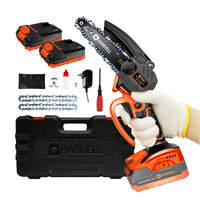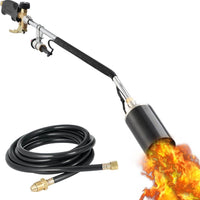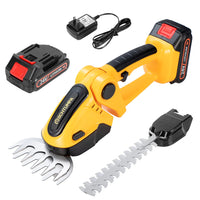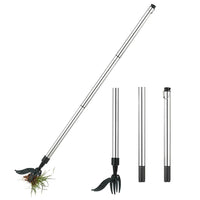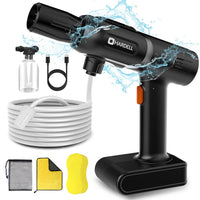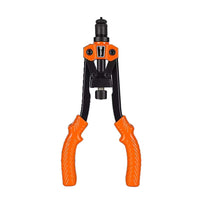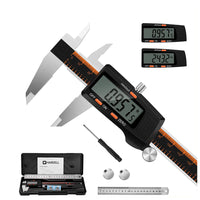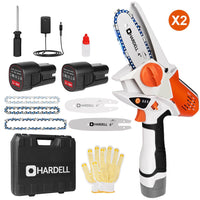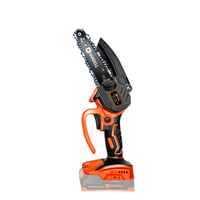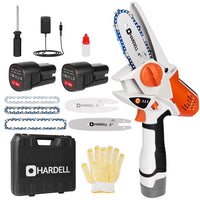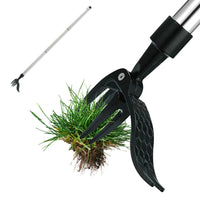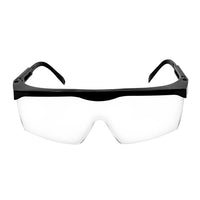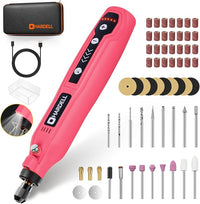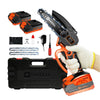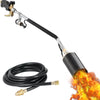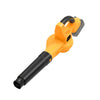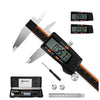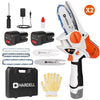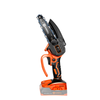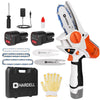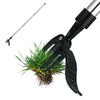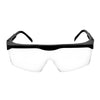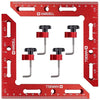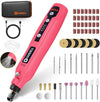Step-By-Step Guide To Cleaning And Polishing: From Prepping To Finishing

The Hardell rotary tool is a versatile and powerful tool that can be used for a variety of cleaning and polishing tasks. Whether you’re prepping furniture, buffing out scratches, or giving your car a thorough shine, the rotary tool will help you get the job done right.
In this guide, we’ll show you step-by-step how to use the Hardell rotary tool to clean and polish like a pro. From prepping surfaces to finishing touches, this guide has all the tips and tricks you need to make any surface look its best!
Prepping Your Work Area: Setting Up For Success
When using the Hardell rotary tool to clean and polish, it’s important to start by prepping your work area. This starts with finding a well-ventilated space that you can use without the risk of inhaling harmful particles or fumes.
This could be in a garage, shed, or other outdoor area. Make sure you have plenty of room to move around safely and easily while working with your rotary tool.
You should also prepare safety gear such as eye protection and dust masks before starting any project. Dust particles from cleaning and polishing can damage eyes, lungs, and skin when inhaled directly or when they come into contact with unprotected areas of the body.
In addition to safety gear, make sure you gather all the necessary materials and supplies for your project before getting started.
This could include different types of abrasive pads, polishing compounds, or buffers depending on what type of surface you’ll be working on.
action to help remove dirt and grime buildup more effectively.
Step-By-Step Cleaning Techniques: Removing Dirt, Grime, And Stains
Cleaning and polishing surfaces can be a tedious task, but with the right approach and the right products, it can be done quickly and effectively. In this section, we will discuss step-by-step cleaning techniques for removing dirt, grime, and stains from different types of surfaces using rotary tools.
Using Rotary Tools To Clean And Scrub Surfaces
Rotary tools are a great way to clean and scrub surfaces quickly and efficiently. The Hardell rotary tool is particularly effective for this purpose since it comes with several different attachments that are designed for different surfaces.
For example, softer cloth or sponge attachments can be used on wood or other sensitive surfaces while metal attachments can be used on metals or hard plastics.
When using the rotary tool, you should start with the lowest speed setting possible while still ensuring that the surface isn’t damaged.
Increase the speed gradually until you find the optimal setting for your surface type. When cleaning harder surfaces such as metals, you may need to increase the speed further to ensure that all dirt and grime buildup is removed effectively.
Tips And Techniques For Effective Cleaning
When it comes to cleaning and polishing surfaces, there are a few tips and techniques that can help make the process easier and more effective.
- Make sure to assess the surface before you start cleaning or polishing. Different surfaces may require different levels of speed and power settings, as well as different types of attachments for the rotary tool.
- Always wear protective gear when using rotary tools with chemical cleaners or abrasives such as steel wool.
- When polishing stainless steel or other metals, always use a compound such as metal polish in combination with an abrasive pad for the best results.
Step-By-Step Polishing Techniques: Achieving A Mirror-Like Shine
Polishing surfaces with a rotary tool can be a bit tricky since it requires finesse and patience. However, with the right approach, you can get your surfaces looking like new once again. Here are some tips that will help you achieve the best results when polishing with the Hardell rotary tool:
- Start at low-speed settings to ensure that you don’t damage the surface while polishing. Increase the speed gradually as needed until you find the optimal setting for your material type.
- Once you have found an appropriate speed setting, use a cloth or sponge attachment to polish in small circles over the entire surface area. This technique ensures that all scratches and dirt buildup are removed evenly without creating any additional damage to the surface.
- For tougher surfaces such as stainless steel, use metal polish and an abrasive pad to finish off the polishing process. This will help you achieve a-like shine while still protecting the surface underneath.
- Always wipe away any dust or debris after each step of the polishing process to ensure that you don’t leave any residue behind on the surface.
- Finally, once you have finished using your rotary tool, it’s important to properly store it in order to prevent damage and keep it in peak condition for future usage.
Common Cleaning And Polishing Mistakes To Avoid: Tips For Optimal Results
When it comes to cleaning and polishing, making mistakes can be a costly endeavor. Not only could you end up damaging the surface, but you may also waste valuable time and money in the process.
To ensure that your efforts are fruitful, there are some common mistakes you should avoid when using a Hardell rotary tool:
- Don’t use too much pressure when cleaning or polishing surfaces with the rotary tool. Excessive pressure can cause damage to sensitive materials like wood or even strip away layers of paint from certain surfaces. While it is important to apply some pressure, try not to use more than what is necessary as this can cause damage in the long run.
- Don’t overuse chemical cleaners or abrasives such as steel wool on delicate surfaces. These materials are designed for tougher jobs and can easily damage softer surfaces if not used correctly.
- Take your time while cleaning and polishing surfaces with a Hardell Rotary tool since rushing through the process can result in uneven results or even further damage to the surface.
Cleaning And Polishing Different Types Of Surfaces

Rotary tools can be used to clean and polish a variety of surfaces, from hard metals to delicate wood. Each surface type requires its own specific techniques for optimal results.
Here are some tips for using the Hardell rotary tool for different types of surfaces:
Wood Surfaces
For wood surfaces, it is best to use a soft cloth or sponge attachment with the rotary tool on low-speed settings. This will help to prevent any damage to the wood while still removing dirt and grime buildup.
When polishing wood surfaces, you can also apply a wax or furniture polish after cleaning in order to protect it from future damage.
Metal Surfaces
For metals such as stainless steel or aluminum, it is best to use an abrasive pad combined with metal polish or chemical cleaners when polishing with the Hardell rotary tool.
This will help remove any scratches and give your surface a long-lasting shine that will last longer than regular buffing alone.
Glass Surfaces
When dealing with glass surfaces, it is important to start slow and increase speed gradually as needed. This will help ensure that the glass surface isn’t damaged while still providing an effective clean and polish job.
It may even be beneficial in some cases to use a non-abrasive polishing compound before starting with the rotary tool in order to get an extra shine on your glass surface.
Cleaning And Polishing Safety Precautions: Protecting Yourself And Your Surfaces
When cleaning and polishing surfaces with a Hardell rotary tool, it is important to take all necessary safety precautions in order to avoid any potential accidents or injuries. Here are some tips for staying safe while using the rotary tool:
- Wear protective gear such as safety glasses, gloves, and a dust mask when operating the Hardell rotary tool. This will help protect you from any particles or debris that may be kicked up during the process.
- Make sure that your workspace is clean, organized, and free of any tripping hazards prior to beginning work with the rotary tool. This will reduce any possibility of slips or falls while you’re working.
- Keep an eye on cords, tools, and other items near your work area in order to prevent them from getting tangled or snagged while using the rotary tool.

Finishing Touches: Applying Sealant Or Wax For Added Protection And Shine
Sealants and waxes are essential for any successful cleaning and polishing job. Applying a sealant or wax can provide extra protection against scratches, stains, and dirt build-up, as well as give a polished finish that will last longer than regular buffing alone.
Here's what you need to know about these helpful finishing touches:
Sealants
A sealant works by creating a barrier between the surface and its environment, helping protect it from damage while still allowing it to be cleaned and polished.
Most sealants are either acrylic or polyurethane-based, with each type providing different levels of protection depending on the material being sealed.
Waxes
Waxes are used mainly to add extra shine to surfaces after they have been cleaned and polished. They provide an extra layer of protection without making surfaces look dull or glossy like other products may do.
Techniques For Applying Sealants And Waxes For Added Protection And Shine
When applying sealants or waxes, it is important to use the right techniques in order to achieve the desired results. Here are some tips for applying sealants and waxes for extra protection and shine:
- Before applying a sealant or wax, make sure that the surface has been properly cleaned and polished first. This will ensure that the sealant/wax is applied evenly and can adhere properly to the material for added protection.
- When using a sealant, apply it in thin layers rather than one thick coat. This will help ensure that the product is spread evenly across the surface and does not leave behind any patches or streaks.
- For best results, use a soft cloth or applicator pad when spreading sealants or waxes over surfaces as this will help provide an even coat without leaving any unsightly smudges behind. Additionally, make sure to wipe away any excess product before allowing it to dry completely in order to avoid creating any clumps or residue on the finished product.
- After applying a sealant or wax, allow ample time for it to dry completely before exposing it to water or other elements so that it can form its protective barrier around the surface properly.
- Finally, don’t forget to reapply sealants and waxes regularly in order to maintain their effectiveness over time! This will help keep your surfaces looking their best for longer periods of time without having to do any additional cleaning or polishing work in between applications.
Conclusion
With Hardell rotary tool, you can ensure that your surfaces remain looking their best for years to come. From prepping and polishing to applying sealants or waxes for extra protection and shine, the key is following directions carefully in order to achieve good results.
Keep these tips in mind when cleaning and polishing surfaces with Hardell rotary tool so that you can enjoy a long-lasting finish without having to worry about damage from environmental elements. So go ahead – take advantage of this amazing product today!
